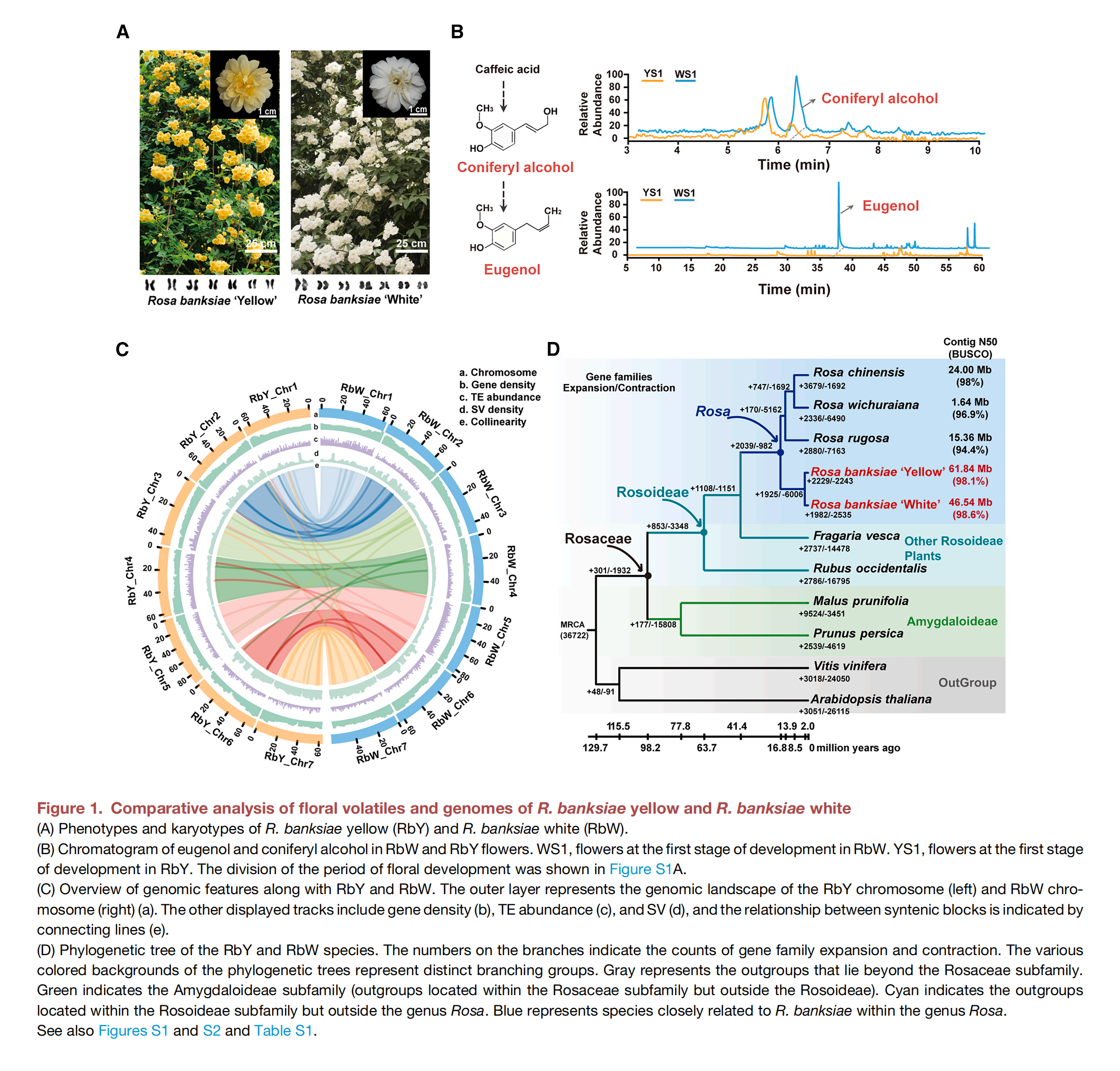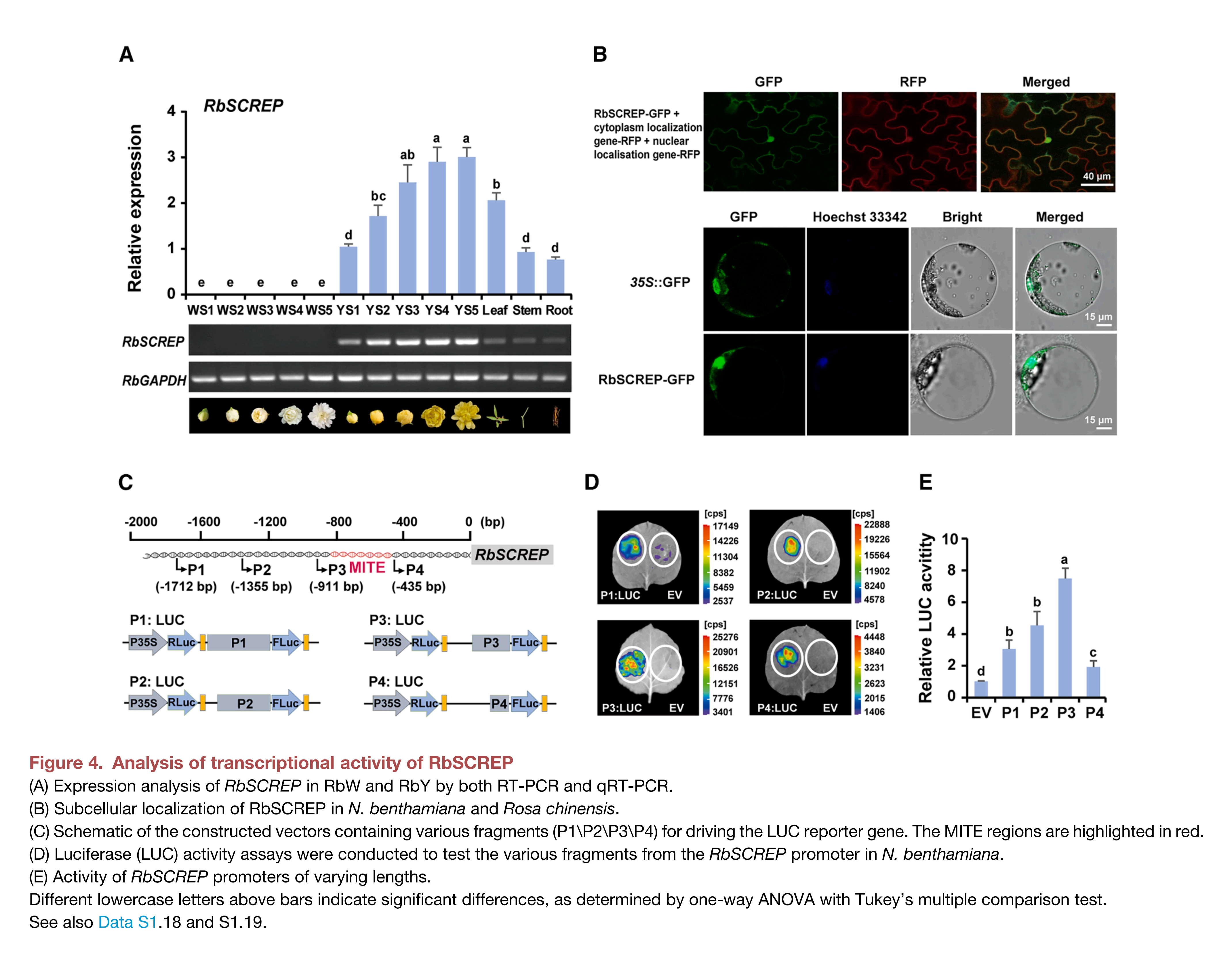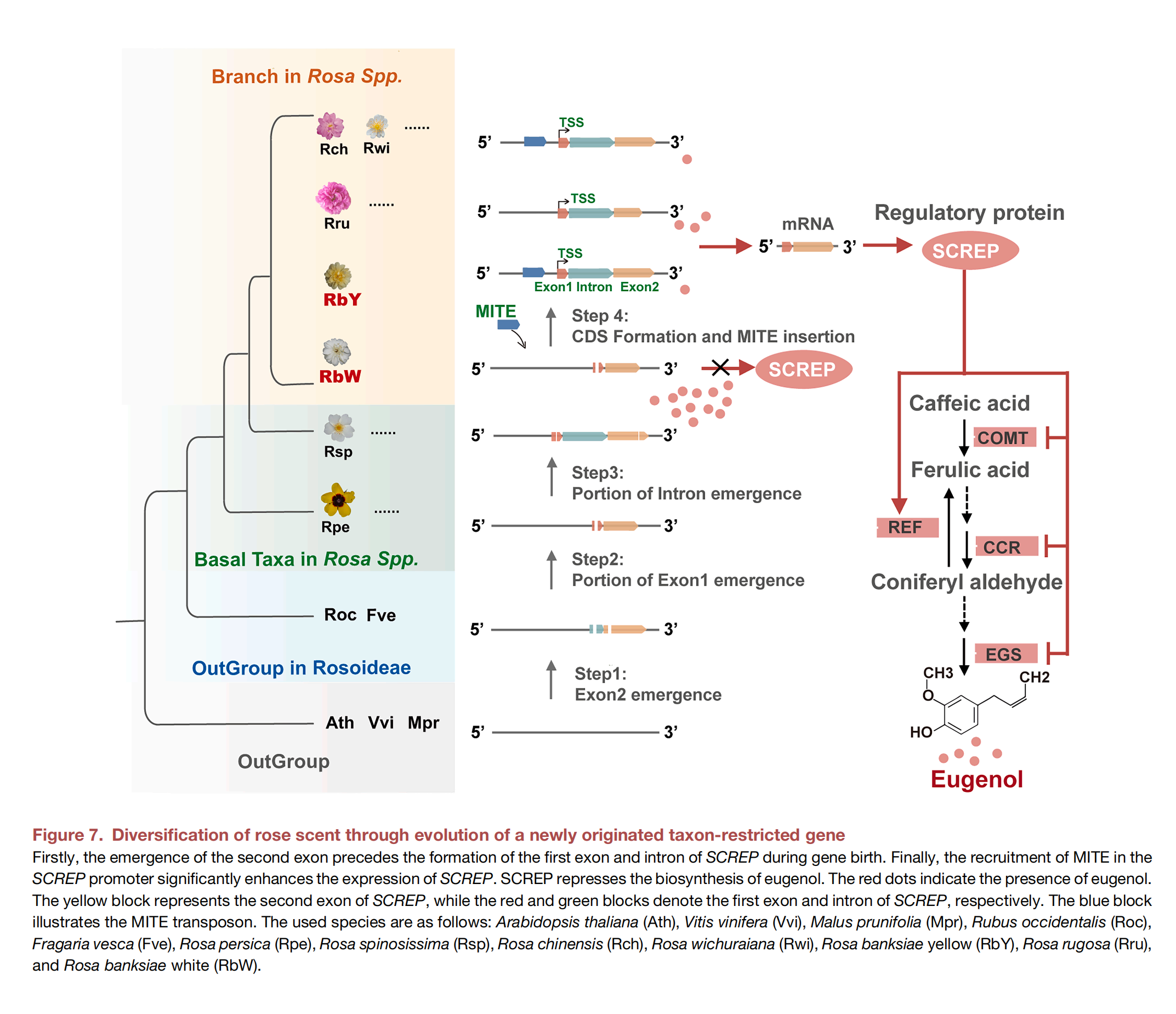Roses, symbols of love and beauty, have long been cherished for their enchanting fragrance. But have you ever wondered where this intoxicating scent comes from? A recent groundbreaking study published in Cell has unveiled the mystery behind the evolution of rose fragrance — the birth of a brand-new gene called SCREP.
I. From “Odorless” to “Fragrant”: The Lesson from Two Roses
The story begins with two closely related rose species — Rosa banksiae ‘White’ and Rosa banksiae ‘Yellow’. The white variety blooms with pure white flowers and a strong fragrance, while the yellow variety produces golden flowers that are almost scentless.
Through metabolomic analysis, scientists discovered that the flowers of the white variety are rich in a volatile compound called eugenol, whereas the yellow variety contains very little of it. Eugenol is one of the key compounds responsible for the sweet and distinctive aroma in many flowers, including roses.

Figure 2 | Origin and fixation of the SCREP gene in the genus Rosa.
II. Tracing the Genetic “Fingerprint”: The Discovery of SCREP
To uncover the genetic basis of this difference, researchers conducted whole-genome sequencing and fine-scale comparison of the two roses. They identified a crucial genomic region that contained a previously unknown gene — SCREP.
Even more astonishingly, SCREP did not arise through traditional gene duplication, but rather through de novo origination — literally “from nothing.” Part of its sequence (the second exon) exists as a noncoding “ancestral sequence” in other Rosaceae plants such as strawberries and raspberries, but its first exon and intron are a completely novel creation unique to the Rosa genus.

Figure 3 | In vitro activities of key enzymes in the eugenol biosynthetic pathway (COMT1, CCR1, REF1, EGS2) and transgenic validation. Source: original PDF, Figure 3, page 6.
III. The Magic of “Jumping Genes”: Boosting Fragrance Expression
The birth of a new gene is only half the story; how it gains function and affects traits is the other half. Researchers found that in most highly fragrant rose cultivars, the promoter region upstream of the SCREP gene contains an insertion of a special transposable element — a Miniature Inverted-repeat Transposable Element (MITE).
This MITE insertion acts like an “enhancer,” dramatically increasing the expression level of SCREP, leading to abundant production of the SCREP protein in flowers.
IV. The “Conductor” of Fragrance: How SCREP Works
So, how does the SCREP protein regulate scent production? The study revealed that SCREP functions as a transcription factor, essentially the “conductor” of fragrance biosynthesis. It does not directly synthesize eugenol but instead regulates the “worker genes” responsible for eugenol production (such as COMT1, CCR1, and EGS2).
Specifically, SCREP suppresses the expression of eugenol-promoting genes (COMT1, CCR1, EGS2) while activating a counteracting gene (REF1). Through this fine-tuned regulation, roses can precisely control eugenol levels, creating the diverse fragrance profiles observed among different rose varieties.

Figure 4 | Subcellular localization, transcriptional activation activity of RbSCREP, and the enhancing effect of MITE insertion on promoter activity. Source: original PDF, Figure 4, page 7.
V. Evolution and Diversity: The Journey of SCREP
By analyzing the genomes of over 100 Rosa species, scientists reconstructed the evolutionary journey of the SCREP gene:
1.Ancient Origin: Part of the sequence (second exon) existed in ancestral Rosaceae species as noncoding DNA.
2.Rose-Specific Formation: During rose evolution, mutations and recombination gradually assembled a complete, protein-coding gene structure.
3.Functional Activation: The insertion of the MITE element boosted gene expression, granting SCREP powerful regulatory function.
4.Diversity Driver: Differences in the presence and regulatory strength of SCREP among rose species directly led to variations in eugenol levels and fragrance intensity — thus driving the diversification of rose scents.

VI. Conclusion: New Gene, New Trait, New World
This study not only unravels the mystery of rose fragrance diversity but also provides a fascinating example of how new genes originate, gain function, and shape biological traits. It reminds us that evolution is full of creativity — a single gene born “from nothing” can fill the world with endless sweetness and charm.
In the future, by understanding the function of SCREP, scientists may use biotechnological approaches to precisely control floral scent, creating rose varieties with more distinctive and appealing aromas — making the world a more fragrant place.
Reference:Li, Y., Li, R., Shang, J., et al. (2025). A de novo-originated gene drives rose scent diversification. Cell.
